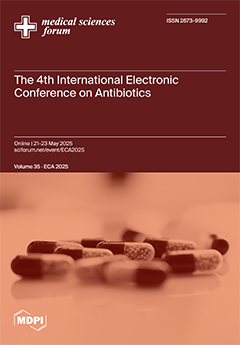This review explores the biofilm architecture and drug resistance of
Enterococcus faecalis in clinical and environmental settings. The biofilm in
E. faecalis is a heterogeneous, three-dimensional, mushroom-like or multilayered structure, characteristically forming diplococci or short chains interspersed with water channels for nutrient exchange
[...] Read more.
This review explores the biofilm architecture and drug resistance of
Enterococcus faecalis in clinical and environmental settings. The biofilm in
E. faecalis is a heterogeneous, three-dimensional, mushroom-like or multilayered structure, characteristically forming diplococci or short chains interspersed with water channels for nutrient exchange and waste removal. Exopolysaccharides, proteins, lipids, and extracellular DNA create a protective matrix. Persister cells within the biofilm contribute to antibiotic resistance and survival. The heterogeneous architecture of the
E. faecalis biofilm contains both dense clusters and loosely packed regions that vary in thickness, ranging from 10 to 100 µm, depending on the environmental conditions. The pathogenicity of the
E. faecalis biofilm is mediated through complex interactions between genes and virulence factors such as DNA release, cytolysin, pili, secreted antigen A, and microbial surface components that recognize adhesive matrix molecules, often involving a key protein called enterococcal surface protein (
Esp). Clinically, it is implicated in a range of nosocomial infections, including urinary tract infections, endocarditis, and surgical wound infections. The biofilm serves as a nidus for bacterial dissemination and as a reservoir for antimicrobial resistance. The effectiveness of first-line antibiotics (ampicillin, vancomycin, and aminoglycosides) is diminished due to reduced penetration, altered metabolism, increased tolerance, and intrinsic and acquired resistance. Alternative strategies for biofilm disruption, such as combination therapy (ampicillin with aminoglycosides), as well as newer approaches, including antimicrobial peptides, quorum-sensing inhibitors, and biofilm-disrupting agents (DNase or dispersin B), are also being explored to improve treatment outcomes. Environmentally,
E. faecalis biofilms contribute to contamination in water systems, food production facilities, and healthcare environments. They persist in harsh conditions, facilitating the spread of multidrug-resistant strains and increasing the risk of transmission to humans and animals. Therefore, understanding the biofilm architecture and drug resistance is essential for developing effective strategies to mitigate their clinical and environmental impact.
Full article



